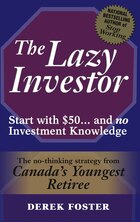After reading this article in the Globe Investor Magazine, it's no wonder why Canadian investors like Derek Foster like dividend paying stocks so much...
The secret to tax-free living
How to leverage the dividend tax break
Globe Investor Magazine, Nov. 21, 2007
THAT OLD SAW ABOUT death and taxes being inevitable is only half true: If you live in Canada, you can earn a tidy five-figure income without paying any tax. And you won't have to open an offshore bank account or work a single job under the table, because it's perfectly legal in the eyes of the Canada Revenue Agency.
How is this possible? Dividends.
Though the CRA is greedy when taxing employment and interest income, it's uncharacteristically generous when it comes to dividends of publicly-traded Canadian corporations. By taking advantage of the dividend tax credit, an investor with a sizable nest egg can live off the dividend income without sending a penny to Ottawa. Here's how.
Suppose you've worked hard, saved diligently and have a million dollars. You decide to invest the money in a portfolio of dividend-paying Canadian stocks that yields 4.5%. Let's further assume the $45,000 in dividends that rolls in every year is your sole source of income. Now, let's examine what happens to those dividends at tax time. The first thing the CRA does is apply a "gross up" to the dividends. Specifically, it multiplies the $45,000 by 1.45, for a total of $65,250. This is your taxable income. So far, things look pretty bad, right? The CRA is making it appear you earned more money than you actually did.
Including the basic personal exemption, your federal tax owing would be about $10,550. But-here's the key-because you're earning dividend income, you qualify for the generous dividend tax credit, which equals the grossed-up amount multiplied by 18.97%, or $12,375. Now for the best part: Subtract $12,375 from $10,550 and what do you get? That's right, a negative number! Translation: You don't owe any tax to the CRA. And because provinces offer their own dividend tax credits, depending on where you live you might not have to pay any provincial tax either.
In Ontario, for example, it's possible for an individual to earn up to $48,000 in dividends without forking over any federal or provincial tax, apart from a $600 Ontario health premium. In British Columbia dividend tax credits, an investor can earn up to $66,000 essentially tax-free, according to Michael Smith, an analyst with National Bank Financial. And the tax-free thresholds are set to rise over the next few years as provinces boost their dividend tax credits.
Though the tax-free dividend strategy is powerful, few people know about it, Smith says. "I've shown it to at least a dozen people in the financial industry-portfolio managers, investment bankers, analysts. Basically, they all say, 'Wow!'"
It's especially appropriate for retirees with significant savings and no other sources of income.
Now, let's look at what would happen if, instead of earning dividend income, you invested the $1 million in a bond or guaranteed investment certificate that yields 4.5%. Because interest is taxed at full marginal rates, if you live in Ontario you'd end up paying $9,050 in tax on $45,000 of income.
From a tax perspective, dividends are the clear winner. But dividends are at--tractive for another reason: Many companies-including banks, insurers, pipelines and utilities-raise their payouts once a year or more. Manulife Financial, for example, has hiked its dividend at an annual rate of about 25% over the past five years.
A bond or GIC, on the other hand, pays a fixed amount of interest. If you can stomach some volatility in the stock market and have a long-term investing horizon, dividends are the better choice, in my books.
That's why, for my own portfolio, I buy nothing but dividend stocks with rising payouts.
JOHN HEINZL is an investing reporter and columnist with The Globe and Mail's Report on Business.




























